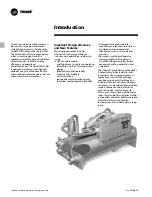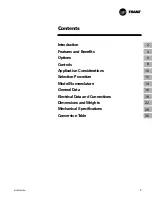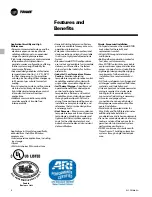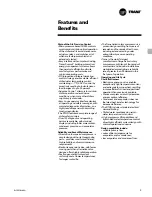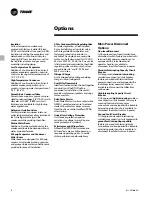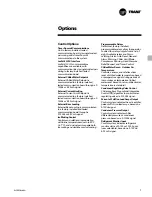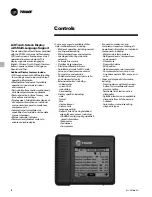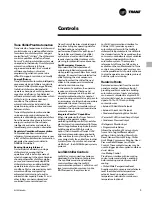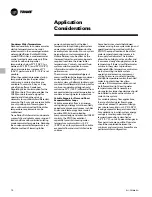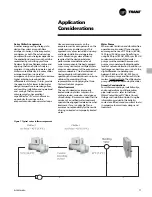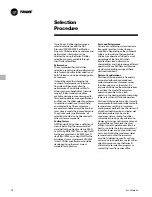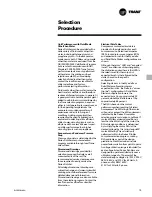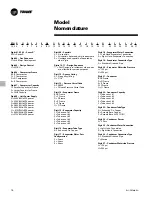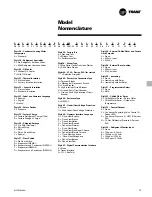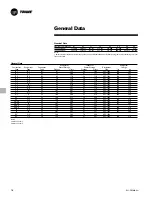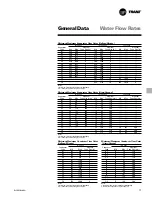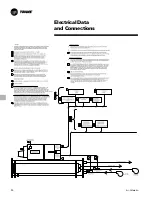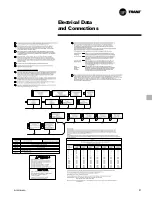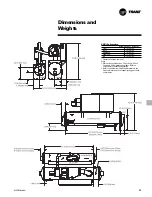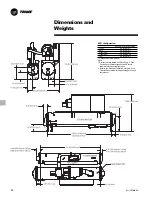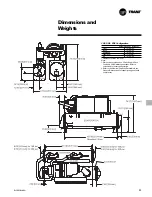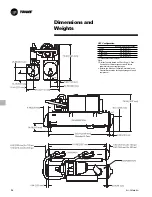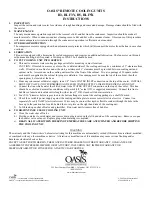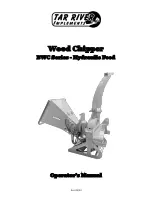
11
RLC-PRC020-EN
Series Chiller Arrangements
Another energy-saving strategy is to
design the system around chillers
arranged in series, on the evaporator,
condenser, or both. The actual savings
possible with such strategies depends on
the application dynamics and should be
researched by consulting your Trane
Systems Solutions Representative and
applying the Trane System Analyzer
program. It is possible to operate a pair of
chillers more efficiently in a series chiller
arrangement than in a parallel
arrangement. It is also possible to achieve
higher entering-to-leaving chiller
differentials, which may, in turn, provide
the opportunity for lower chilled water
design temperature, lower design flow,
and resulting installation and operational
cost savings. The Trane screw
compressor also has excellent
capabilities for “lift,” which affords an
opportunity for savings on the
evaporator and condenser water loops.
Application
Considerations
Like series arrangements on the
evaporator, series arrangements on the
condenser may enable savings. This
approach may allow reductions in pump
and tower installation and operating
costs. Maximizing system efficiency
requires that the designer balance
performance considerations for all
system components; the best approach
may or may not involve multiple chillers,
or series arrangement of the evaporators
and/or condensers.
This ideal balance of
design integrity with installation and
operating cost considerations can also be
obtained by consulting a Trane
representative and applying the Trane
System Analyzer program.
Water Treatment
The use of untreated or improperly
treated water in chillers may result in
scaling, erosion, corrosion, and algae or
slime buildup. It is recommended that the
services of a qualified water treatment
specialist be engaged to determine what
treatment, if any, is advisable. Trane
assumes no responsibility for the results
of using untreated or improperly treated
water.
Water Pumps
Where noise limitation and vibration-free
operation are important, Trane strongly
encourages the use of 1750-rpm (60 Hz),
1450-rpm (50 Hz) pumps. Specifying or
using 3600-rpm (60 Hz), 3000-rpm (50 Hz)
condenser water and chilled water
pumps must be avoided, because such
pumps may operate with objectionable
levels of noise and vibration. In addition, a
low frequency beat may occur due to the
slight difference in operating rpm
between 3600-rpm (60 Hz), 3000-rpm
(50 Hz) water pumps and Series R chiller
motors. Important Note: The chilled water
pump must not be used to stop the chiller.
Acoustic Considerations
For chiller sound ratings, installation tips,
and considerations on chiller location,
pipe isolation, etc., refer to
the Trane
Water-Cooled Series R Chillers Sound
Ratings and Installation Guide. Using the
information provided in this bulletin,
contact a certified sound consultant to aid
in proper mechanical room design and
treatment.
Figure 1. Typical series chiller arrangement
Содержание RTHD
Страница 20: ...RLC PRC020 EN 20 Electrical Data and Connections...
Страница 21: ...21 RLC PRC020 EN Electrical Data and Connections...
Страница 30: ...RLC PRC020 EN 30 ConversionTable...
Страница 31: ...31 RLC PRC020 EN...


